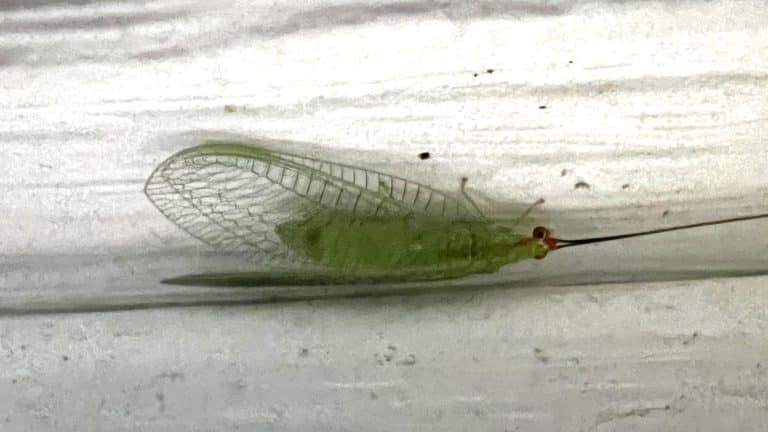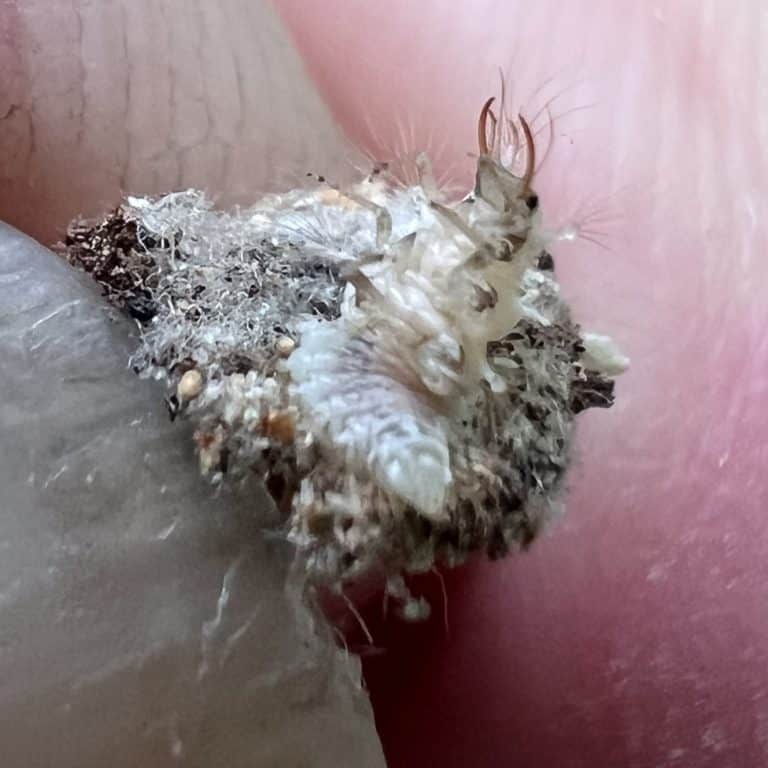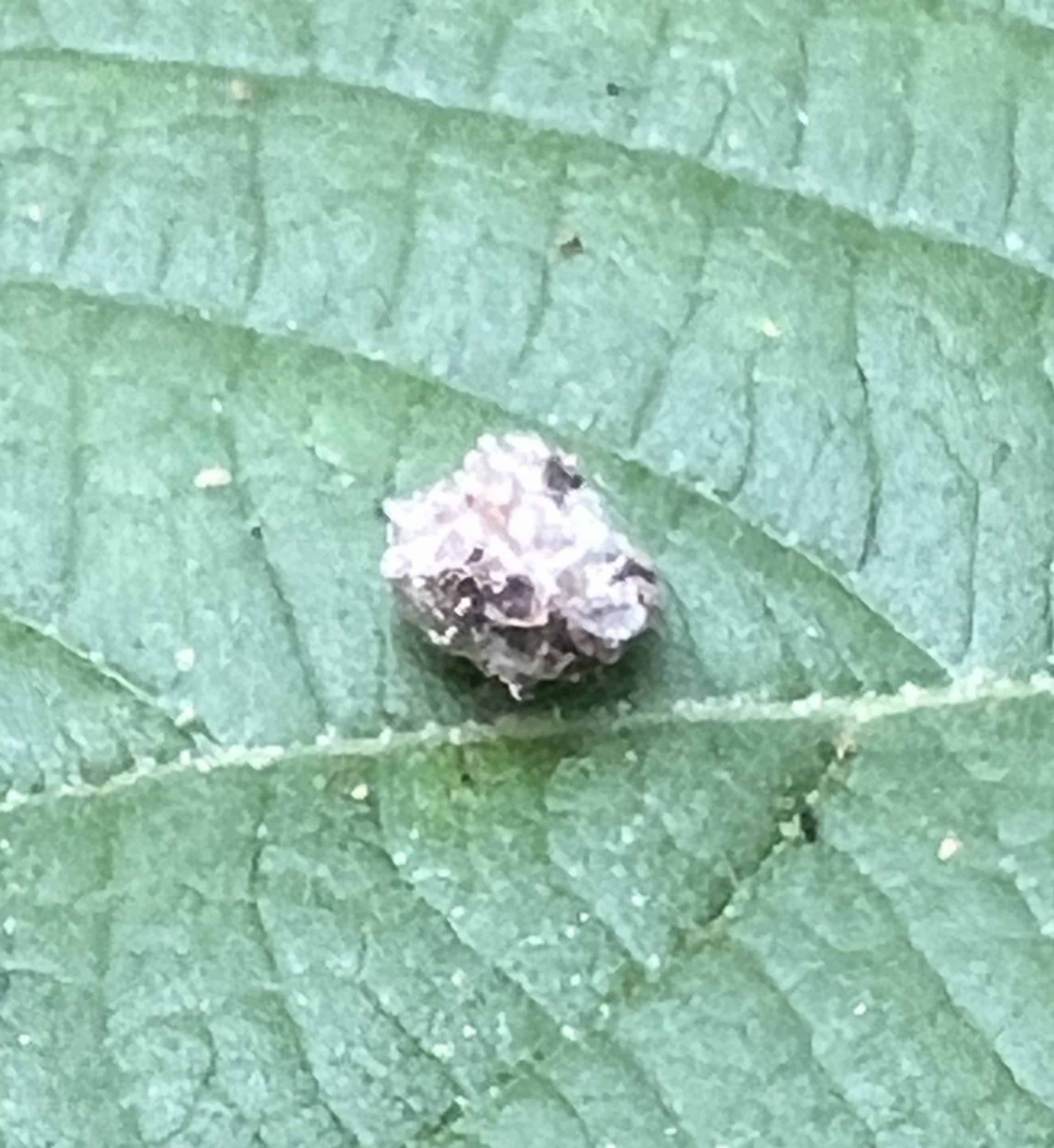If you happen to see what looks like a dust bunny moving across the leaf of your favorite plant, look again. Underneath what looks like a pile of trash is a vicious predator – the larvae of a Green Lacewing. Everything about this common group of insects is focused on eating other bugs, especially those we often view as pests on the plants we like to care for. The adults and the larvae of lacewings are commonly referred to as beneficial insects because of this diet.
The insect order Neuroptera includes a rich diversity of species that all have predatory larvae, feeding on a variety of other insects and mites. Doodle Bugs or Ant Lions are commonly known because of their distinctive pits dug into loose soil, where their larvae wait for an ant or other insect to fall into their outstretched jaws (https://ourmshome.com/ant-lions-and-their-pits/). The name Neuroptera translates to net (neuro) wing (ptera) and the group is commonly referred to as lacewings.
Green Lacewings are part of the large family Chrysopidae, referring to the green color of the wings of adults, and are the only group of lacewings that carry the name trash bug, junk bug, or garbage bug for their larvae. Adults are commonly attracted to porch lights. They reach about an inch in length, with green bodies and long, light green lacy wings. Larvae are voracious predators of aphids, scale insects, caterpillars, and mites.


Apparently, a well-camouflaged trash bug can sneak into a group of aphids without giving its identity away to the aphids and any ants, until it is too late. Even when grabbed by the lacewing larvae, the aphid can be pulled under the pile-o-trash where it is fed upon, until it too joins the trash pile on the larvae’s back. The camouflage apparently also hides the larvae from other predators.
In addition to the carcasses of their prey, trash bugs will also use bits of dead plant material and, in some species, bits of lichen for their covering. There are as many as 20 species of green lacewings in the south. You may also see the elongated larvae of brown lacewing larvae feeding on aphids, but these do not use camouflage. The adults are brown in color and can also be seen at porch lights.
So, never pass up the opportunity to look closely at anything moving across the leaf of a plant. It is a sign of a critter just trying to make it in this wild kingdom of ours.
Hope to see you in our great outdoors!




